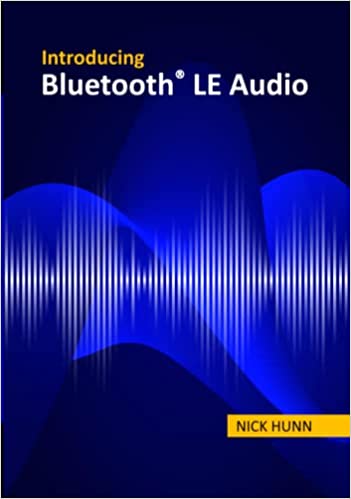Since it was first introduced to the world, Bluetooth® technology has become increasingly relevant to people’s everyday lives. From untethered audio devices to enhanced audio experiences, Bluetooth technology has brought many changes to audio, revolutionizing the way we use media and experience the world.
Bluetooth LE Audio not only optimizes Bluetooth audio performance and adds support for hearing aids, but it also introduces another important feature, Auracast™ broadcast audio. This new feature will enhance the way people interact with the world and help create new life-changing audio experiences.
Following the pace of Bluetooth audio innovation, major manufacturers have also applied the most advanced and cutting-edge technology into their products. As a mobile Internet company focused on in-house high-end smartphone R&D, Xiaomi explores quality audio experiences with a commitment to bring technological magic into people’s lives.
Recently, I talked with Liao Xiaoqing, senior R&D manager of Xiaomi Communications Co., Ltd. about the products developed by Xiaomi using Bluetooth LE Audio and the possibilities ahead for Bluetooth LE Audio and AuracastTM broadcast audio.
Q&A with Liao Xiaoqing from Xiaomi
What are your considerations for adopting Bluetooth LE Audio in Xiaomi products?
As a new global standard for Bluetooth® audio technology, Bluetooth LE Audio will usher in a new era of audio phenomenon in the next twenty years, just like Bluetooth Classic audio did. Bluetooth LE Audio will also create innovative opportunities for Bluetooth products, especially in the true wireless stereo (TWS) market. In addition to Multi-Stream Audio and the Low Complexity Communication Codec (LC3), Xiaomi products also adopt another Bluetooth LE Audio technology, the Isochronous Channel (ISOC) architecture, which offers flexible and diverse support for the link transport layer. Another critical technology is Auracast™ broadcast audio. Introduced this year by the Bluetooth Special Interest Group (SIG,) Auracast™ broadcast audio enables new audio experiences with global interoperability to enhance how users connect with each other and the world around them.
What existing true wireless stereo (TWS) market challenges does Bluetooth LE Audio help Xiaomi products address?
Bluetooth LE Audio helps resolve issues related to the development of TWS technology, audio codecs, sound quality, power consumption, and full-link codec latency as well as compatibility and interoperability between various TWS technologies.
“Bluetooth® LE Audio can improve the compatibility and interoperability of current TWS technology.”
Bluetooth® products available on the market today often face the dilemma between choosing sound quality or power consumption when using high-quality audio codecs like aptX and LDAC. If the user wants better sound quality, the play time of both the source and the sink will see a significant decline. LC3, the audio codec with high sound quality and low power consumption used by Bluetooth LE Audio, is created to solve this specific problem. The reduced power consumption provides more room for future TWS headphone innovation as lower power consumption allows a smaller battery capacity, thus reducing the size of the wireless headphone itself.
Bluetooth LE Audio can improve the compatibility and interoperability of current TWS technology, allowing consumers to purchase TWS products without needing to consider factors such as lack of platform support. Xiaomi is committed to the interconnectivity and interoperability between all Bluetooth LE Audio-enabled devices in the Xiaomi eco-chain for interoperability and all Bluetooth LE Audio qualified devices on the market to provide consumers with seamless and stable Bluetooth technology experiences.

FEATURED INNOVATION
Auracast™ Broadcast Audio
Auracast™ broadcast audio will deliver life-changing audio experiences that will enhance the way you engage with others and the world around you.
For what other product lines do you plan to use Bluetooth LE Audio functions and features to improve future consumer experiences?
Xiaomi has launched its second-generation Bluetooth LE Audio products: Redmi K50, K50 Pro, Note 11T Pro, and Xiaomi 12 Pro Dimensity, with the Redmi Buds 4 Pro earbuds. In addition to audio and video, these products also support Bluetooth LE Audio and LC3 for high-quality voice call experiences and include significant upgrades, in terms of latency, to challenge the industry’s ultra-low latency record.
Xiaomi has been involved in driving the innovation and development of Bluetooth LE Audio. We are eager to implement more new Bluetooth LE Audio features into devices to offer consumers incredible audio experiences like never before. Xiaomi believes that Bluetooth LE Audio, including Multi-Stream Audio and Auracast™ broadcast audio, has a promising future for smartphones, smart TVs, smart speakers, Bluetooth headsets, wearables, and other devices.

Why is the standardization of Bluetooth audio transmission so important? What is the importance of Bluetooth LE Audio to the wireless audio market?
Standardizing Bluetooth® audio transmission is important to chip makers, manufacturers, and end users because it lays the developmental foundation for the entire Bluetooth audio ecosystem to scale. From the perspective of chip makers and manufacturers, standardization means interoperability and the seamless collaboration between devices, making individuals part of a larger, comprehensive ecosystem. As for consumers, standardization provides more choices free from the constraints of customized, proprietary technologies from individual manufacturers.
Bluetooth LE Audio provides a unified standard solution for implementing TWS technology, and consumers are free to use any Bluetooth LE Audio-enabled devices of their choice without needing to worry about platform incompatibility. LC3 codecs can be uniformly used for voice calls and audio/video applications, eliminating the need for developers to consider memory usage and the adaptability of different codecs while end users will not need to compare the advantages and disadvantages. Additionally, Bluetooth LE Audio has introduced Auracast™ broadcast audio, a standardized solution for broadcast audio that provides new use cases for audio sharing in personal and public spaces. Users can receive audio broadcasts directly from public broadcast systems through their own Bluetooth devices or hearing aids that support Auracast™ broadcast audio.
How will the launch of AuracastTM broadcast audio advance the development of Bluetooth audio solutions?
As Zeng Xuezhong, senior vice president of Xiaomi and president of smartphone department, said when Auracast™ broadcast audio launched in June, “The launch of Auracast™ broadcast audio will upgrade personal wireless listening to shared wireless listening. We will fully explore the potential of wireless audio to deliver more value and better experiences to our users.”
“The standardization of Auracast™ broadcast audio will lead to more audio sharing capabilities across the audio sources and sink devices.”
Auracast™ broadcast audio offers new use cases and audio experiences that will significantly improve people’s lives. For example, the new features will drive device upgrades, enhance audio quality in public places like airports and theaters, and help improve user experience by enabling seamless audio sharing. Whether it be sharing a personal audio broadcast with family and friends, translating audio into your native language at a meeting, or ensuring that people with hearing loss receive timely airport announcements, the possibilities Auracast™ broadcast audio will bring to users are endless.
The standardization of Auracast™ broadcast audio will lead to more audio sharing capabilities across the audio sources and sink devices we support, like phones, tablets, watches, headphones, and speakers.

FEATURED INNOVATION
Auracast™ Broadcast Audio
Auracast™ broadcast audio will deliver life-changing audio experiences that will enhance the way you engage with others and the world around you.
Bluetooth®技術は、その誕生以来、人々の日常生活にとってますます切り離せないものとなっています。オーディオの楽しみ方をより充実させるワイヤレスのオーディオ機器をはじめ、Bluetooth技術はオーディオの世界に多くの変革を生み、私たちがメディアを利用し世界を体験する方法に革命的な変化をもたらしています。
LE AudioはBluetoothのオーディオ性能を最大限に高め、補聴器対応を加えるだけでなく、Auracast™ ブロードキャスト オーディオというもう一つの重要な機能も提供します。これは人と外界との関わり方を拡張し、画期的なオーディオ体験の創出に役立つ新しい機能です。
Bluetoothオーディオで進むイノベーションと共に、主要メーカー各社は最新・最先端のテクノロジーを製品に投じています。ハイエンドスマートフォンの自社開発に注力するモバイルインターネット企業のXiaomiは、人々の暮らしの中にテクノロジーの魔法を織り込むことを目指しながら、高音質のオーディオ体験を模索しています。
先日、Xiaomi Communications Co., Ltd.でシニアR&Dマネージャーを務めるリャオ・シャオチン(Liao Xiaoqing)氏にお会いし、XiaomiでLE Audioを用いて開発された製品について、またLE Audio およびAuracastTM ブロードキャスト オーディオの前途にある可能性についてお話を伺いました。
Xiaomiリャオ・シャオチン氏とのQ&A
Xiaomi製品へのBluetooth LE Audio採用に関する考えをお聞かせください。
LE AudioはBluetooth®オーディオ技術の新規格として、従来のBluetooth Classic audioと同じように今後20年にわたりオーディオの新しい時代を開いていくでしょう。同時に、LE AudioによってBluetooth製品にまったく新しい可能性も生み出されます。これは特にTWS(True Wireless Stereo、完全ワイヤレスステレオ)の分野で見られるでしょう。マルチストリームオーディオとLC3(Low Complexity Communication Codec)に加え、Xiaomi製品ではもう一つのLE Audio技術であるアイソクロナスチャネル(ISOC)アーキテクチャも採用しており、これはリンクトランスポート層について柔軟で多様な対応を提供します。また、別の重要な技術として、Auracast™ ブロードキャスト オーディオがあります。Bluetooth SIG(Special Interest Group)が本年導入したAuracast™ ブロードキャスト オーディオは、新しいオーディオ体験を実現します。グローバルな相互運用性により、ユーザー同士、またユーザーとその周囲の世界との間に、これまでにないつながり方を実現するでしょう。
LE AudioによってXiaomi製品が対応可能になった、TWS市場の既存の課題にはどのようなものがありますか。
LE Audioは、TWS技術の開発、音声コーデック、音質、電力消費、フルリンクコーデック遅延、および各種TWS技術間の互換性と相互運用性に関連する課題の解決に寄与します。
“LE Audioは既存のTWS技術における互換性と相互運用性を向上させます”
現在市場にあるBluetooth®製品では、aptXやLDACなどの高音質コーデックを使用する場合に、音質と電力消費のどちらかを選ぶというジレンマに直面することが頻繁にあります。ユーザーが高音質を望んだ場合、ソース側・シンク側の両方で再生可能時間が大きく減少する、といった具合にです。LE Audioが使用する高音質・低消費電力の音声コーデックであるLC3は、まさにこの問題を解決するために生み出されました。消費電力が抑えられることでバッテリー容量も少なくて済むため、ワイヤレスヘッドホン自体を小型化でき、TWSヘッドホンにおける将来的なイノベーションの余地が広がります。
LE Audioは現在のTWS技術の互換性と相互運用性をも改善するため、消費者はTWS製品を購入する際にプラットフォーム対応の有無といった要素を気にする必要がありません。Xiaomiはシームレスかつ安定したBluetooth技術の使用感を消費者に届けるため、当社関連の全LE Audio対応機器が相互に接続でき相互運用性を保ち、また市場でLE Audioの認定を受けたすべての機器との間にも相互運用性を保つことができるよう全力で取り組んでいます。
消費者体験を向上させるため、今後はほかのどのような製品でのBluetooth LE Audio機能の活用を計画していますか。
Xiaomiでは第2世代のLE Audio製品を発売しました。Redmi K50、K50 Pro、Note 11T Pro、Xiaomi 12 Pro DimensityとイヤホンのRedmi Buds 4 Proです。オーディオと動画に加え、これらの製品ではLE AudioおよびLC3対応による高音質通話が実現するほか、遅延性に関する大幅な改良により超低遅延に関する業界記録に挑戦しています。
XiaomiはLE Audioのイノベーションと開発の推進に関わってきました。より多くのLE Audioの新機能を機器に実装し、これまでになく驚異的なオーディオ体験を消費者に提供したいと考えています。Xiaomiでは、スマートフォン、スマートテレビ、スマートスピーカー、Bluetoothヘッドセット、ウェアラブルなどの機器に対して、マルチストリームオーディオおよびAuracast™ ブロードキャスト オーディオを含むLE Audioがもたらす将来的な価値を確信しています。
なぜBluetoothオーディオ伝送の標準化は非常に重要なのでしょうか。ワイヤレスオーディオ市場におけるBluetooth LE Audioの重要性とはどのようなものですか。
Bluetooth®オーディオ伝送の標準化は、チップベンダー、メーカー、エンドユーザーにとって重要です。Bluetoothオーディオのエコシステム全体が拡大していくための発展基盤となるからです。チップベンダーとメーカーの観点からは、標準化は、相互運用性および機器間のシームレスな連携をもたらし、個々の製品をより大きく包括的なエコシステムの一部にすることを意味します。消費者にとって標準化は、メーカーのそれぞれの製品に合わせたカスタマイズと専有技術の制約から解き放たれ、より多くの選択肢の提供につながります。
LE Audioは、TWS技術の実装に関する統一された標準ソリューションを提供します。消費者はプラットフォームの互換性を心配することなく、LE Audio対応製品であれば自由に使用可能です。音声通話とオーディオ/動画アプリケーションではLC3コーデックを一律に使用できるため、開発者は各種コーデックによるメモリの使用量や適合性を考慮する必要がなく、消費者も仕様の優劣を比較する必要がありません。加えて、LE AudioではAuracast™ ブロードキャスト オーディオが導入されました。これは、個人間および公共の場で新しいオーディオ共有の形を可能にする、ブロードキャストオーディオの標準規格です。ユーザーは公共のブロードキャスト通信システムが送信する音声を、Auracast™ ブロードキャスト オーディオに対応する自身のBluetooth機器や補聴器で直接受信できます。
AuracastTM ブロードキャスト オーディオの登場はBluetoothオーディオ製品の発展にどのような前進をもたらすでしょうか。
Xiaomiの上級副社長でスマートフォン部門を統括するツェン・シュエツォン(Zeng Xuezhong)氏は、6月のAuracast™ ブロードキャスト オーディオ公開時、「Auracast™ ブロードキャスト オーディオの登場は、ワイヤレスリスニングを個人のものから共有の体験にアップグレードします。当社ではワイヤレスオーディオの可能性を追求し、ユーザーにより高い価値とより良い体験を提供します」とコメントしました。
“Auracast™ ブロードキャスト オーディオの標準化により、音声ソースとシンク機器の間のオーディオ共有機能の拡充が可能になります”
Auracast™ ブロードキャスト オーディオは、人々の暮らしを豊かにする新しいオーディオの活用方法やオーディオ体験をもたらします。例えば、この新機能は機器の性能を高め、空港や劇場など公共の場での音質を向上させ、シームレスなオーディオ共有を可能にしてユーザー体験の向上をもたらします。自身のオーディオをブロードキャスト通信で家族や友人と共有したり、ミーティングの場で音声を自身の母国語に翻訳したり、難聴者が空港で適切なタイミングにアナウンスを確実に受信できるようにするなど、Auracast™ ブロードキャスト オーディオがユーザーにもたらす可能性は無限です。
Auracast™ ブロードキャスト オーディオの標準化により、スマートフォン、タブレット、スマートウォッチ、ヘッドホン、スピーカーなど音声ソースと当社のシンク機器の間で、オーディオ共有機能の拡充が可能になります。

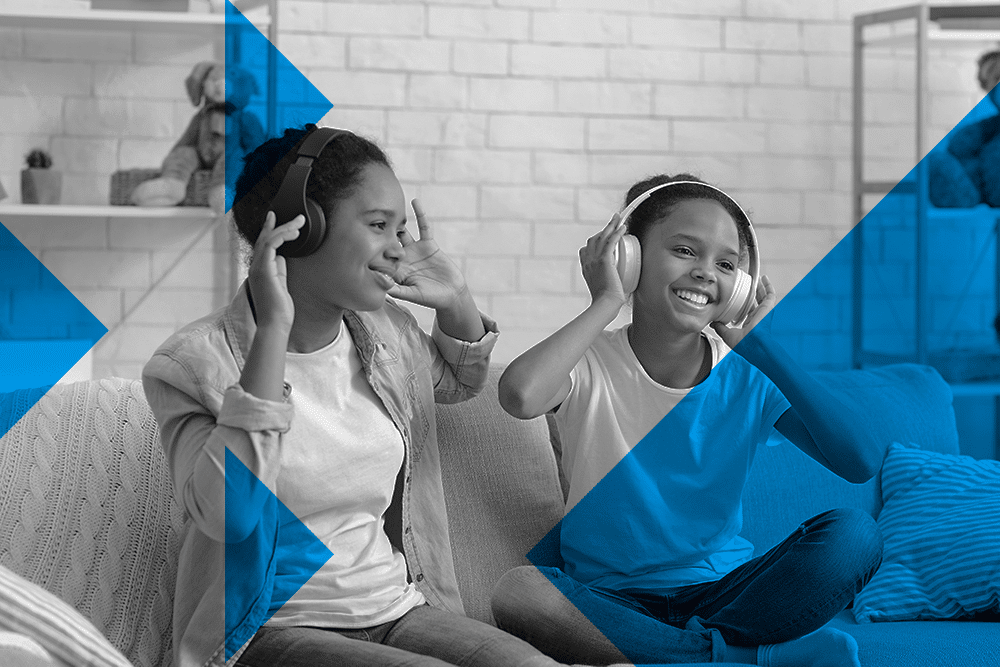





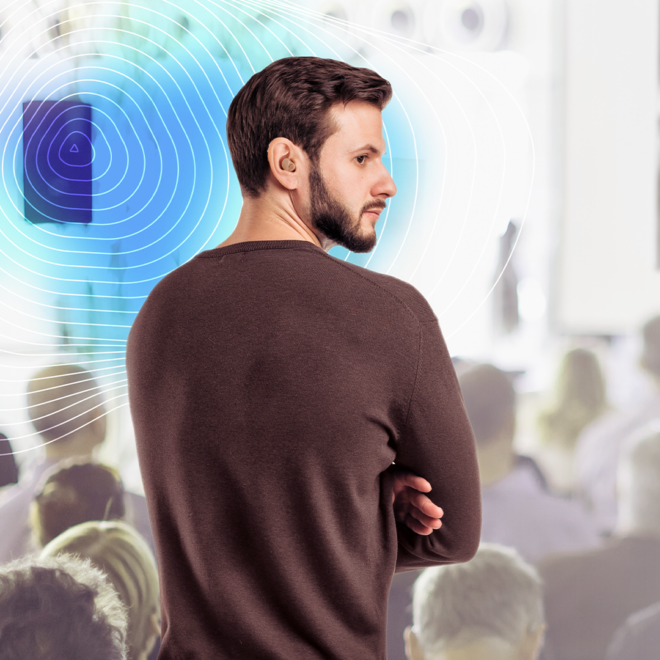



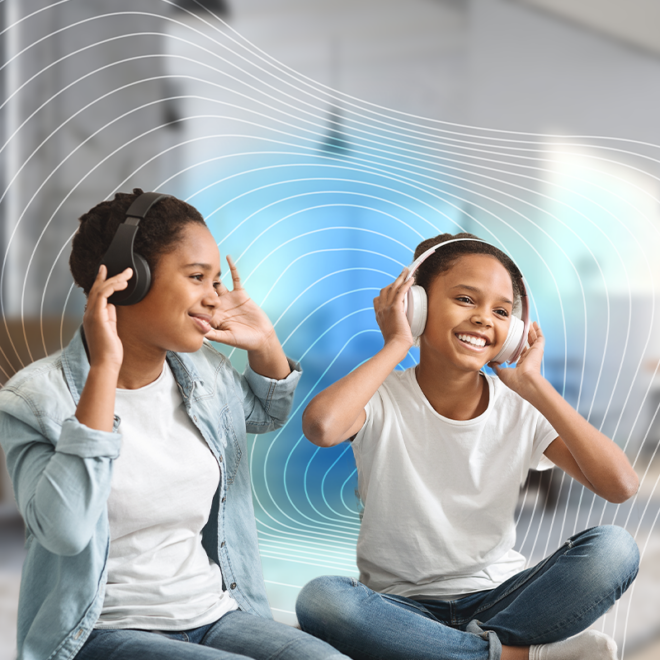



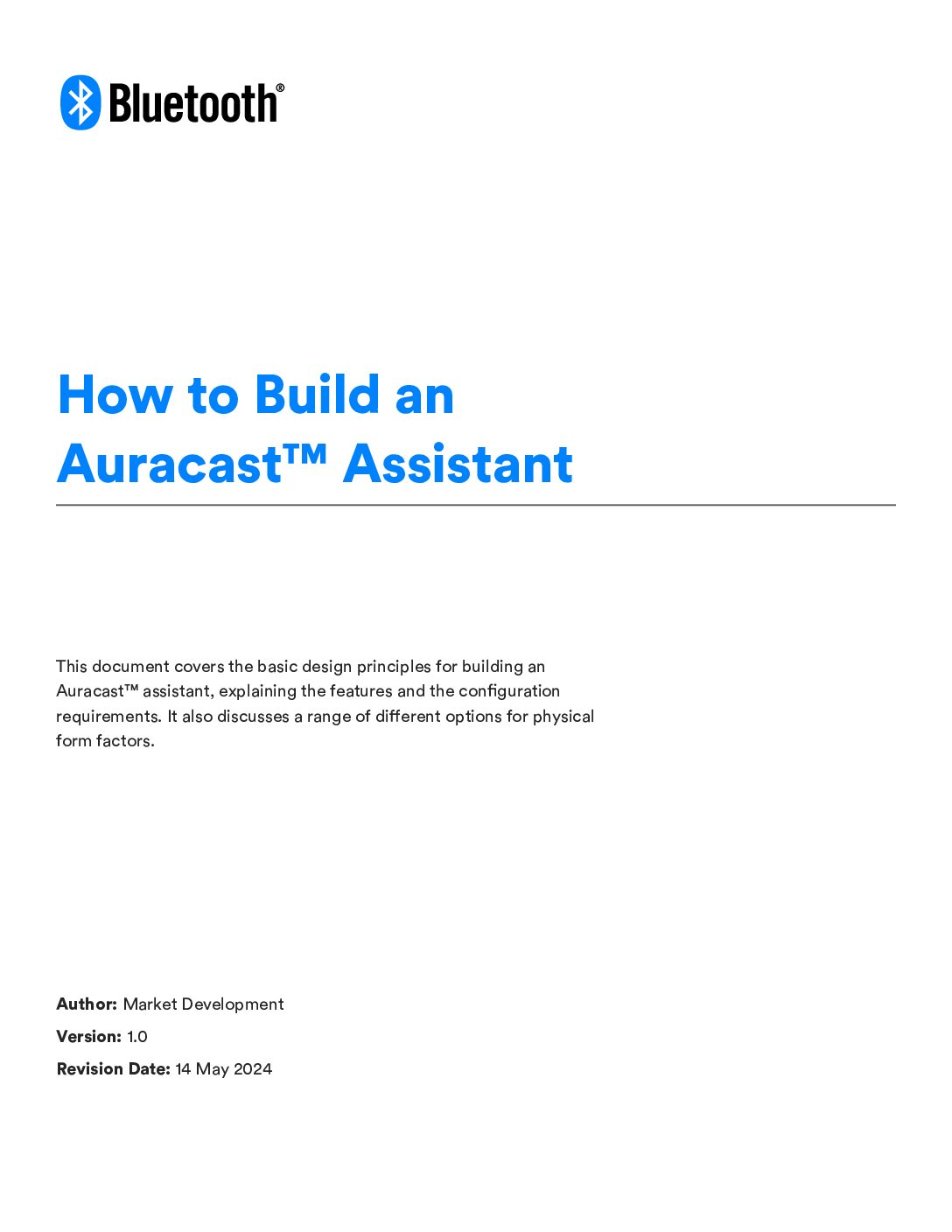



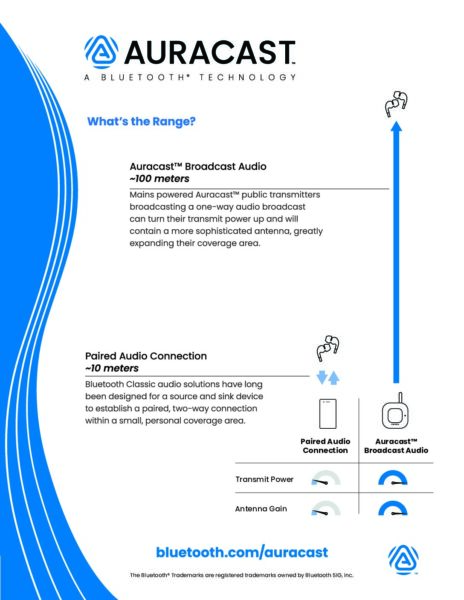
![2312 CES Handout Images FINAL existing pdf 464x600[1]](https://www.bluetooth.com/wp-content/uploads/2024/01/2312_CES_Handout-Images_FINAL-existing-pdf-464x6001-1.jpg)

